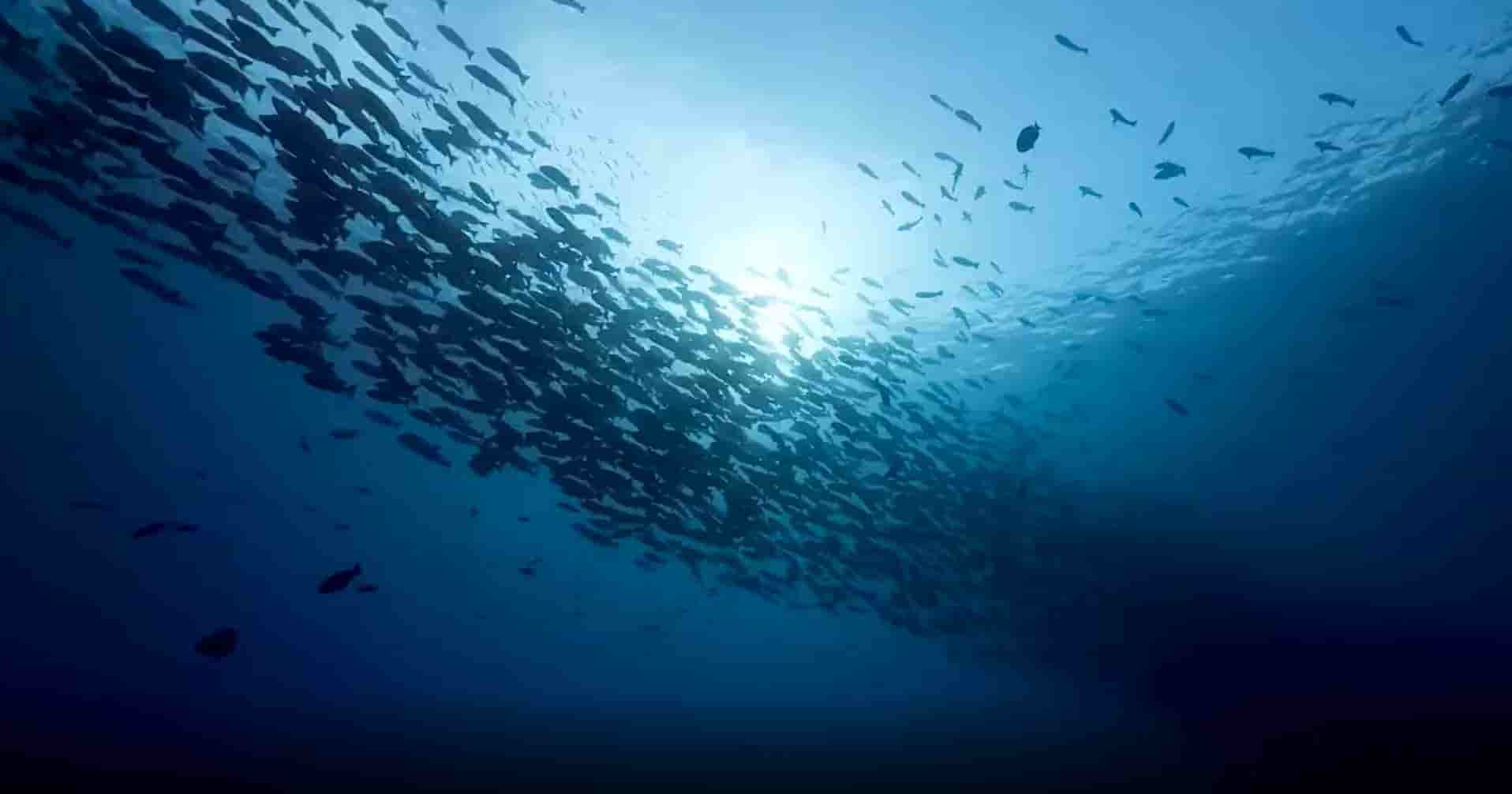
The wildness. The taste. The feeling a well prepared piece of wild fish gives us. Eating fish ignites something that has little to do with health, nutrition or sustainability.
It’s pure satisfaction for body and soul.
We love …
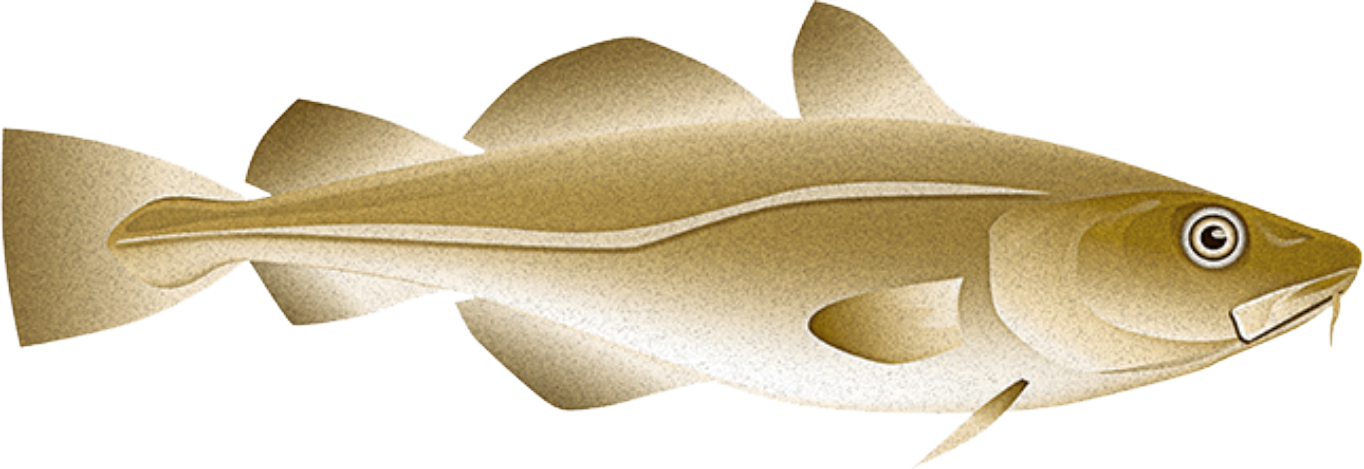
Cod has dense and lean white meat with mild flavour. A correctly cooked cod is moist and flakey. It is all about getting the moisture right.
A light and fresh white wine will do the job. Go for a lighter Chardonnay or even a Pinot Gris.
Fry it, steam it or bake it! Cod can do it all. And if you add butter it becomes unbeatable. Heat a spoon of butter in a pan until light brown. Fry the cod fillet on medium heat. The hot butter caramelize the cod meat and makes it absolutely yummy.
Frozen at sea: Fillets, size-graded, interleaved 3×9 kg.
Land processed: Fresh loins and tails, IQF fillets and roe
Did you know that the United Kingdom and Iceland fought in three Cod Wars? The UK wanted to fish in Icelandic waters but Iceland was having none of it and sent the British fleet home with the tail between their legs all three times. Long live the Icelandic cod!
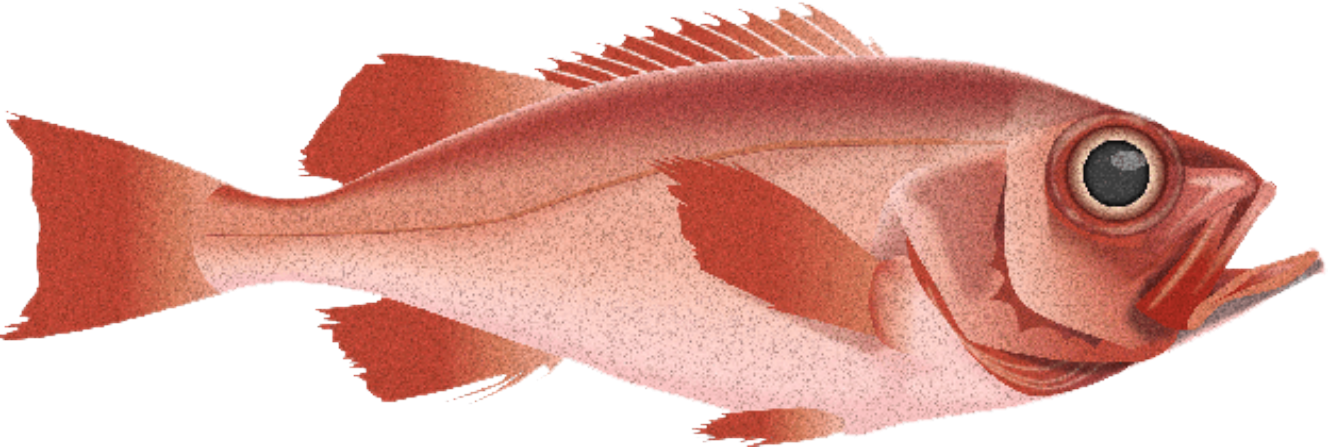
A sweet, firm, white, textured fish with a distinctive red skin. The taste is sweet but subtle – it is a very good substitute for cod and other firm fish.
To complement the delicate sweetness of the red fish a nice crisp and fruity Sauvignon Blanc would be a great match.
High in protein and low in saturated fats, The Redfish is a superfood. I’ts sweetness needs to be balanced with some herbs and spices. We recommend baking the fish wrapped in paper. Place the filet on the paper, sprinkle a little olive oil and some fresh herbs, salt and pepper – and wrap it. Bake it for 15-20 minutes at 225 celsius.
Frozen at sea: Whole round andH/G, size graded, 3×7 kg.
The deep sea redfish is not like most fish. It gives birth to living babies … kinda. Most fish spawn unfertilised eggs into the water and wait for a male fish to fertilise the eggs. The deepwater redfish is different – it uses internal fertilisation and spawns free-living larvae.
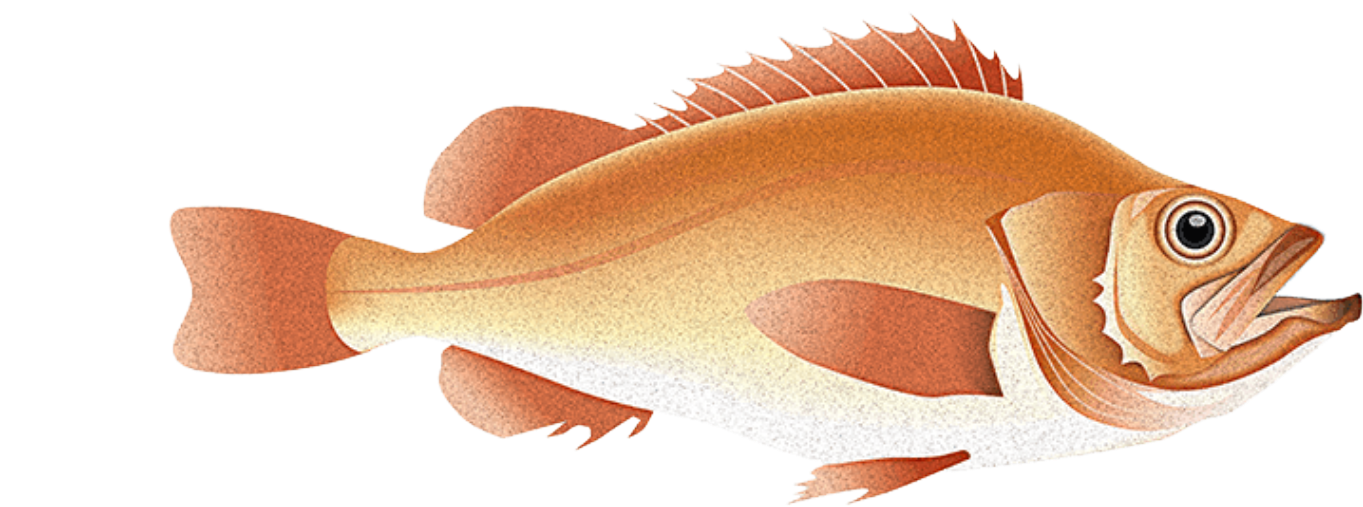
Golden redfish taste very much like the deep sea redfish – sweet and delicate. The meat is firm and moist – and the skin is reddish yellow – almost rose colored.
Blackening adds lots of flavor and spice to the fish – so this calls for a big wine. Consider a Rhone blend, such as grenache/syrah/mourvedre or an oaky chardonnay.
Forget about gold – go black. Try blacken the golden redfish – the warm spice is sooo good with the sweet meat. Dip the fish in melted butter, then roll it in cajun spices and fry it on both sides in butter or oil. Serve it with a wedge of lemon.
Frozen at sea: Whole round and H/G, size-graded, 3×7 kg
Land Processed: Fresh loins and fillets pbi or pbo, IQF fillets
The golden redfish is a slow growing fish – it takes 15 years to reach adulthood. And some fish even get to celebrate their 75 year birthday.

Everybody loves halibut – not for it’s great looks, but for it’s marvelous taste. Sweet and mild – and the snow white meat has relatively large flakes. It is by many considered the tastiest fish in the world.
The intense taste and hint of fattiness demands something of a wine. We recommend a buttery Chardonnay – a full body Pinot Gris could also do the job.
The tasty halibut is ideally paired with other flavoursome foods. It works very well in the asian cuisine. Try preparing a spicy thai salad and use gentle fried pieces of halibut instead of the usual beef or chicken.
Frozen at sea: H/G, heads, tails, size-graded, 2×13 kg
The halibut is the most valuable flatfish in the Icelandic waters. And the teeth from the halibut is a valuable trophy for many. In the past fishermen sometimes caught halibuts as big as 300 kg – now 70 kg is considered really big.

Mackerel has a more pronounced flavor than fx cod and haddock. The taste is very rich and the meat is soft and moist. It has a milder taste than salmon.
The oiliness of mackerel calls for acidity in the wine. You could pick your favourite from Muscadet, Pinot Grigio, Provence rosé or a nice Cremant. The main thing for wine pairing is the acidity.
Mackerel is perfect for barbequing since its oily flesh makes it almost impossible to overcook it. Season with salt and pepper and grill it for a few minutes on each side – sprinkle a bit of lemon juice on top before serving.
Frozen at sea: Whole round, size-graded.
Land Processed: Whole round and H/G, fishmeal and oil.
The mackerel is considered almost a superfood – in line with blueberries, acai etc. Why? Because of its high content of omega 3 fatty acids that helps your heart and brain work its best.
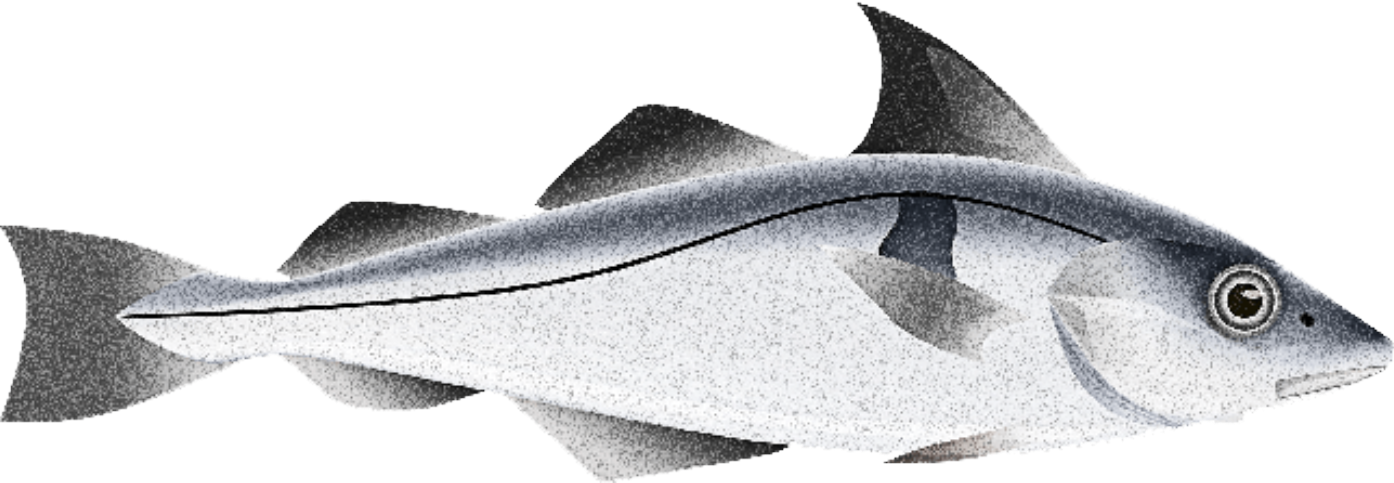
The meat of the Haddock is almost transparent. It turns shiny, white and firm when cooked. It has more taste than cod – but it is still a mild, moist and savory flavor. It used to be for special occasions – but we like to think everyday is special and suited for Haddock.
Fish’n chips goes with beer – no question about it.
A perfect choice for ‘fish’n chips’ – battered in breadcrumbs with a classic accompaniment of tartar sauce and chips. But try cooking it with the skin on – frying the skin side crispy and letting the other side just touch the pan for a moment. Never overcook the Haddock.
Frozen at sea: Fillets, size-graded, interleaved 3×9 kg.
Land processed: Dried products
The haddock is an extremely clever and fast fish – and quite difficult to catch. But cleverness often manifests itself in a dangerous curiosity. Driven by curiosity the haddock swims close to the fishing vessels, the nets, the lines etc. and ends up being caught … and eaten by humans.

Saithe is a very tasteful fish with a tender texture. The flesh is a bit darker than that of related species like the cod, but when cooked it is considered by many to be of greater taste than cod.
Since saithe is a little darker than cod and haddock a light red wine works very well. We recommend a fresh Pinot Noir.
It’s not about the looks – it’s all about taste. Saithe has a somewhat dull color – but a delicate taste. It is nice to batter and fry the saithe and serve it with colorful greens or a colorful cold herbal sauce. As for the cod … be careful not to overcook it. Moisture is key to the great taste.
Frozen at sea: Fillets, size-graded, interleaved 3x9kg.
Land Processed: Fresh loins, tails and portions, IQF portions.
Saithe is an extremely strong swimmer. It is among the few species that has no trouble conquering the heavy currents during the wild storms in the North Atlantic Ocean. The strength is what makes the saithe’s meat taste so good.